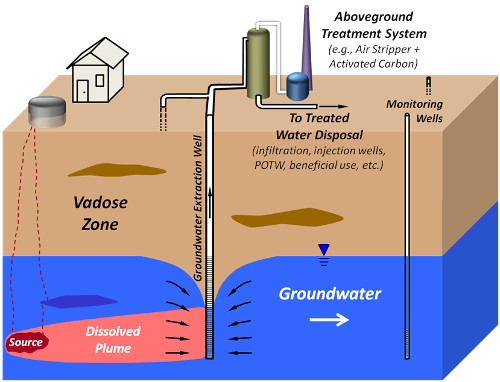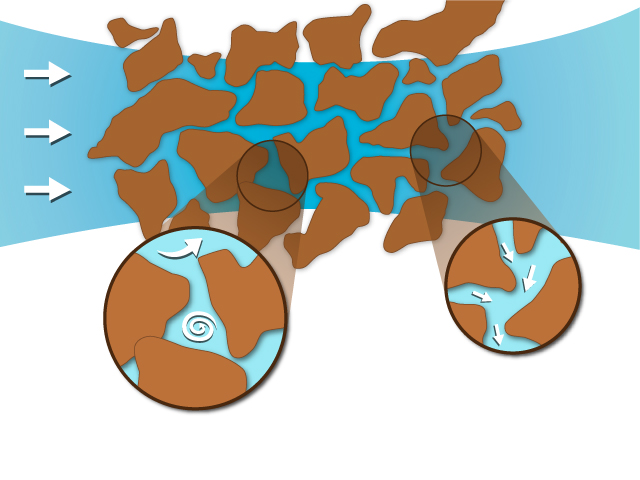Duquesne Hydrology Lab
Hydrology, water resources engineering, and fluid mechanics research at Duquesne University
People
Principal Investigator
Students
Overview
Publications
Pure Thirst
Weather Station
Resources
Courses
Course Policies
Seminar
Hosted on GitHub Pages — Modified
Groundwater Remediation
Groundwater is a critical resource as the largest reservoir of liquid fresh water. Water systems that supply approximately one-third of customers in the U.S. and 98% household well withdrawals depend on safe groundwater. Unfortunately, groundwater is vulnerable to contamination by a large range of hazardous materials. Remediation of these contaminants is needed to return the aquifer to a usable condition; however, these efforts are lengthy and expensive.

Schematic of a typical pump-and-treat groundwater remediation. Image from the Pacific Northwest National Laboratories, US Department of Energy.
The most common method is pump-and-treat either alone or in conjunction with another technology. This approach uses pumps to remove contaminated water from an aquifer. One major bottleneck to remediation is that contaminants become trapped in pores that do not have a flow into and out of the pore; these pores have a dead end and thus are termed dead-end pores. Contaminants in these dead-end pores can remain in groundwater despite extensive treatment and release contaminant back into the aquifer after treatment.

Flow through porous media. (left inset) A poorly connected pore is in contact with the flow; however, the flow does not enter such an arrangement under steady flow. Molecular diffusion is the only mechanism that allows transport of contaminants between the two pore types. (right inset) Well-connected pores do not have any stable, isolated eddies and the fluid volume can be advected through them. Figure and caption from Kahler and Kabala [2015], Image credit: Daphne Ching.
The US Environmental Protection Agency identified a serious and common problem in pump-and-treat remediation sites: after remediation ends and without external sources, contaminant levels in the aquifer rise again to unacceptable levels; this is known as rebound. There are several categories of sources for contaminant; however, the current work here focuses on matrix diffusion from dead-end pores. The only way that contaminant leaves dead-end pores is by diffusion. Rebound can pose a serious health risk to those who rely on the aquifer for water supply and will inevitably result in an expensive redeployment of remediation equipment.

Velocity (shown in m/s by color) of an axisymmetric dead-end pore of 0.001 m diameter with the expansion of 0.003 m diameter. Computational fluid dynamics (CFD) software is used to show the potential cleanup of remediation strategies.
Numerical and laboratory experiments confirm that sudden changes in flow rate can alter the fluid dynamics into and around these pores and improve contaminant removal. Rapidly pulsed flow (with a period on the order of one second) achieves significantly better contaminant removal than steady flow. These processes have not yet been fully exploited in groundwater remediation. Implementation of rapidly pulsed technology would utilize the same extraction and injection wells currently used in pump-and-treat remediation but could require replacement or modification of the pumps. Further research into this will include large-scale testing of rapidly pulsed pumping and improvements to numerical models to include various sorption processes and contaminant types.